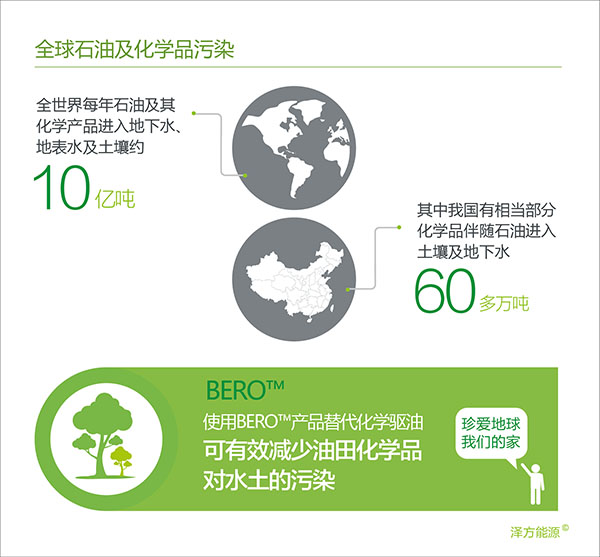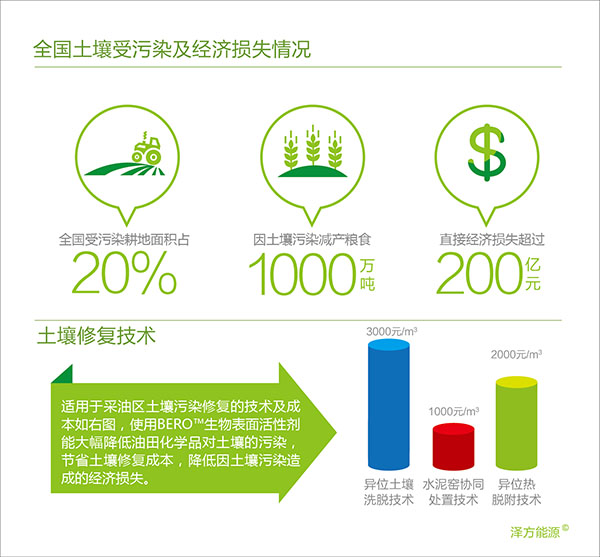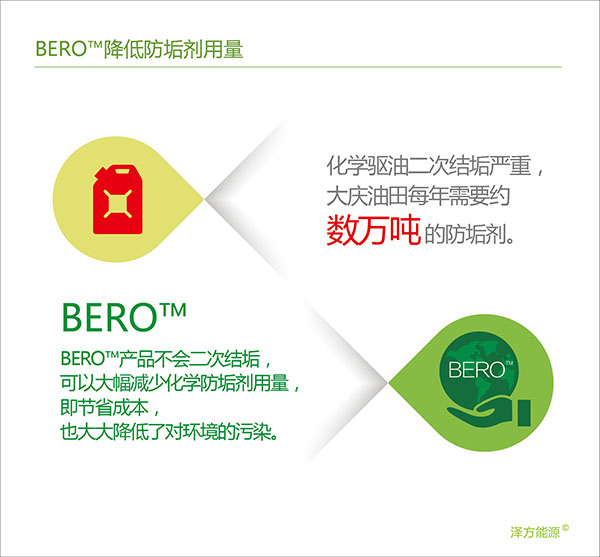How is oil extracted? Many people think that they are spurting out of the ground. Others think that it is a steamed bread machine. In fact, oil extraction is a very complicated matter. When oil production begins, the pressure of the formation is large, and oil will spurt out. This is called Once oil production. Slowly, the underground pressure is not so big. If oil is to come out, it needs to be driven out of water. This is the secondary oil recovery, also called water flooding. After a period of water flooding, the larger pores in the subterranean sandstone have been opened by the water, and the oil inside has been driven out. The smaller pores are no longer useful for water injection. Only 15% to 25% of the oil is mined at this time. If you want to extract more oil, you need to adopt some "methods." After years of reforms, tertiary oil recovery technologies currently include chemical flooding, thermal flooding, gas injection flooding, and microbial flooding. Among them, chemical flooding is widely used due to its low cost and quick effect. Polymer flooding and ASP flooding are the “primary forces†of chemical flooding. Compared with other methods of flooding, chemical flooding has obvious advantages, but there is also a weakness that people can not ignore: It has highly toxic pollution to soil and water resources, and it poses risks for health hazards to construction workers. Is there an environmentally friendly and efficient oil recovery method? In recent years, a new mode of oil production has gradually entered the major oil fields and has achieved good results. Chemical Flooding Hazards At present, the most commonly used tertiary oil recovery technologies are polymer flooding and ASP flooding. The mechanism of polymer flooding is to add high-molecular polymer in the injected water, increase the viscosity of the displacement phase, adjust the water absorption profile, increase the displacement phase wave and volume, and increase the ultimate recovery factor. Studies have shown that the application of polymer flooding can increase oil recovery by 10%. The ternary compound flooding is based on the combination of polymer, alkali, and active agent in oil extraction. The addition of alkali and active agent to the sandstone in the polymer is more effective than polymer flooding. Both polymer flooding and ASP flooding are cost-effective. Not only are they cheap, but they also have quick results and a good yield increase. However, its soft underbelly is highly toxic to soil and water resources, and poses health risks for construction workers. This is the environmental cost of secondary pollution in industrial production, which we cannot ignore today. We all know that if oil leaks in the process of mining, it will cause pollution, but it ignores another type of pollution that oil extraction brings: chemical pollution. Chemicals have also brought about terrible consequences while promoting social progress. Research shows that 80%-85% of human cases of cancer are related to chemical carcinogen contamination, and the proportion of teratogenicity and mutagenesis is even higher. For example, the main components of polymer flooding and ASP flooding are polyacrylamides. Polyacrylamide itself is non-toxic, but its monomeric acrylamide is a highly toxic substance. Acrylamide is neurotoxic, genetically toxic, and carcinogenic. . When a large amount of polyacrylamide accumulates in the soil and water, the acrylamide content will exceed the standard. Not only will destroy the nerve center, but also cause cancer. The International Agency for Research on Cancer (IARC) evaluated its carcinogenicity in 1994, listing acrylamide as a class 2 carcinogen (2A), a possible human carcinogen, based on the fact that acrylamide is metabolized in both animals and humans. Its carcinogenic activity metabolites epoxy propionamide. What is even more frightening is that the main component of petroleum is a mixture of various alkanes, cycloalkanes, and aromatic hydrocarbons. It is a chemical in itself, and after mixing with more chemical components, it may produce more complex chemical reactions that will bring about The consequences cannot be predicted. After entering the soil, these chemical products will directly remain in the soil and directly pollute the soil around the oil field. In particular, the oil well is located in the periphery of the crop land. The direct consequence is a few acres or even tens of acres of land near the cropland. It cannot be cultivated in the next 2-3 years. It is worth noting that, even after 2-3 years, the crops that grow in this soil may have chemical contents that exceed the national standard and will cause harm to humans after eating. Moreover, even if the soil is repaired in a very expensive and time-consuming manner, it cannot return to its original state. What is even more worrying is that more and more chemical pollutants have infiltrated the soil system through various methods, causing serious groundwater pollution. Contaminated drinking water may directly lead to cancer, and may also cause cancer promotion through other carcinogenic factors. Surveys have shown that the heavier the water pollution, the higher the incidence of liver cancer, the less water pollution, and the lower incidence. The emergence of biological flooding The biological flooding technology will not have similar problems, because microbial oil recovery is a non-injurious treatment of oil reservoirs. It will not cause confusion to the soil, formation water, and crude oil. The principle is the biological nature of biological products, and The role of chemistry is completely different. It acts directly on the plugging body without altering the properties of the crude oil, and does not produce new derivatives. Microorganisms are ubiquitous in nature, from water bodies, soils to air. Microorganisms and their metabolites are all natural organic substances that do not pollute the environment. Therefore, bio-oil recovery does not cause any pollution to the soil. Even if the oil well is in the periphery of the crop land and there is no problem of land pollution through the periphery of bio-oil recovery, it will not cause pollution to the water. The idea of ​​using microbes to increase recovery was proposed by American Beckman in 1926. Over the next 40 years, staff members conducted a series of exploratory experimental studies on the role of microbes in petroleum genesis and the role of crude oil components, but did not achieve significant technical and economic benefits. People's great importance to microbial oil recovery technology began in the early 1970s. The outbreak of the world's oil crisis accelerated and accelerated the research and application of microbial oil recovery technology. By the late 1980s and early 1990s, high-tech science and technology, especially biological genetic engineering, developed rapidly on a global scale. People's understanding of microbial oil production was further deepened, and some breakthroughs were made in indoor research and mine application. In recent years, the technology of microbial flooding has become increasingly mature, and it has been widely used in field trials and applications at home and abroad. At present, major domestic oilfields have also started to conduct bio-oil extraction experiments, and some have made some progress. At present, Schlumberger, Baker Hughes, Halliburton and other large companies have achieved good results in the field of microbial oil recovery in the world, and a company in China has independently developed a relatively mature microbial oil production technology. “BERO biosurfactant†independently developed by Suzhou Zefang New Energy Technology Co., Ltd. is a technology that uses microorganisms to ferment into biosurfactants to extract crude oil from rock formations. The effect can be maintained for more than 12 months without maintenance. . This technology is currently highly popular in the United States, but it is also a new product. Microbial oil recovery has the origin of microorganisms and heterogeneity. The source is to extract bacteria from oil wells. Afterwards, according to the conditions of bacteria, nutrient fluids are regularly injected into the wells to allow bacteria to reproduce and reproduce underground; Bacteria are collected and the fermented broth is injected underground. "BEROTM biosurfactant" is a non-active protein because it is a finished product. Therefore, it can adapt to different formations and oil wells without being influenced by the degree of salinity, pressure, and temperature of the water, and it is applicable to all oil wells. The oil layer is clean, thereby increasing oil recovery. In the basic understanding of modern biology, enzymes are proteins that have a metabolic catalyst in vivo. It can specifically promote a certain reaction but they themselves do not participate in the reaction, and has the characteristics of high reaction efficiency, mild reaction conditions, small reaction product pollution, low energy consumption, and easy control of the reaction. BEROTM Biosurfactant is a polymeric enzyme, and as a water soluble product, it has a very high ability to release hydrocarbons on the surface of reservoir rock particles. After being injected into the stratum, because of its active nature, it can adhere to the rock surface for a long time and transform the properties of the rock formation into a hydrophilic biological surface, which can reduce the wetting angle and the interfacial tension of the reservoir rock particles, thus reducing the crude oil in the reservoir. The flow resistance in the pores and the biodegradation of BEROTM biosurfactants will continuously cause deformation and splitting of the oil droplets and release them from the rock formation. Not only can the crude oil in the retentate layer be loosened, but also the oil droplets It becomes smaller and easier to seep out of the micropores of the rock formation until it is produced. Due to the properties of the enzyme, a mild emulsion of oil, water, enzymes, and enzyme-based enzymes is formed. The emulsion acts as a barrier, contact, and change to the retention layer to achieve clean, reduced flooding, and increased oil content. Recovery efficiency. At the same time, and because it does not generate other new products, there is no problem of blocking pores and secondary pollution. Economic benefits The advantages of biological flooding are not only limited to environmental protection, but also have good appeal in terms of economic benefits. “BEROTM Biosurfactant†passed the industrial development and experiment of more than 200 low-production oil wells in 11 oil fields in the country, Texas and Wyoming, USA. The success rate is over 95%, the annual average single well production increases by more than 300 tons, the average annual increase rate is over 120%, and the effect cycle is more than 12 months. The average annual increase rate of the same type of biological products is only 30%. If according to the input-output ratio, BEROTM biosurfactant is at 1:5. An average of one ton of BEROTM biosurfactant is used for plugging an old well and can be increased by producing 1-1.5 tons of crude oil per day. At present, each new well drilled in China is invested between 300 and 5 million yuan, with the most conservative increase in production by 50%, and each new well will be drilled with a new well. The crude oil price will be 2,400 yuan per ton (according to international crude oil prices). Estimate), that is, increase income by at least 2.4 million yuan. For example, Shengli Oilfield's crude oil production in 2014 was 27.87 million tons. If BERO biosurfactant is used, it is conservatively estimated that it can increase production by 10 million tons per year, and the crude oil production suddenly exceeds the peak of 33.5 million tons. In terms of environmental protection expenditures, it can save at least 200 million yuan each year. According to statistics, in the “Eleventh Five-Year Plan†period, Shengli Oilfield invested more than 1.1 billion yuan in water wells and water quality control alone. ([Author, Meng Meng, Energy Industry Watcher])
1. Bathroom spray gun, can also be called a women's washer.
Single Lever Bidet Mixer,Single Handle Basin Mixer,Single Handle Basin Faucet,Single Handle Basin Mixer Taps,Excellent Quality Single Handle Basin Mixer WENZHOU CHENKAI SANITARY WARE CO.,LTD , https://www.cnchenkai.com



2. The general spray gun comes with a pressurization module, often used as a flushing toilet, but also can facilitate flushing the corner of the toilet, cleaning the basin, cleaning the broom and other functions, after installation, you will find that the function is simply too humane. 3. When installing, you only need to use a three-way angle valve at the toilet access. One way the water goes into the toilet and the other way into the spray gun. There are multiple options for spray gun water pipes, among which explosion-proof bellows and telephone line hoses are the most commonly used, especially telephone line hoses are the most widely used because they do not take up space and are highly stretchable.